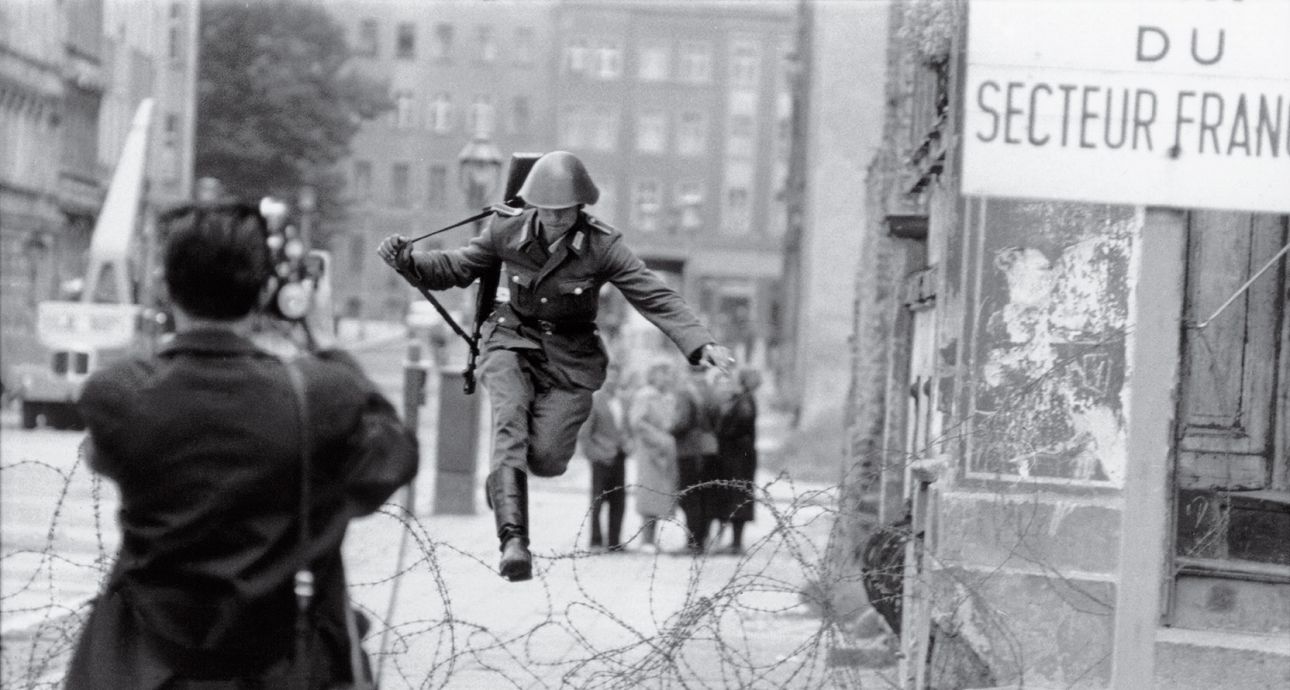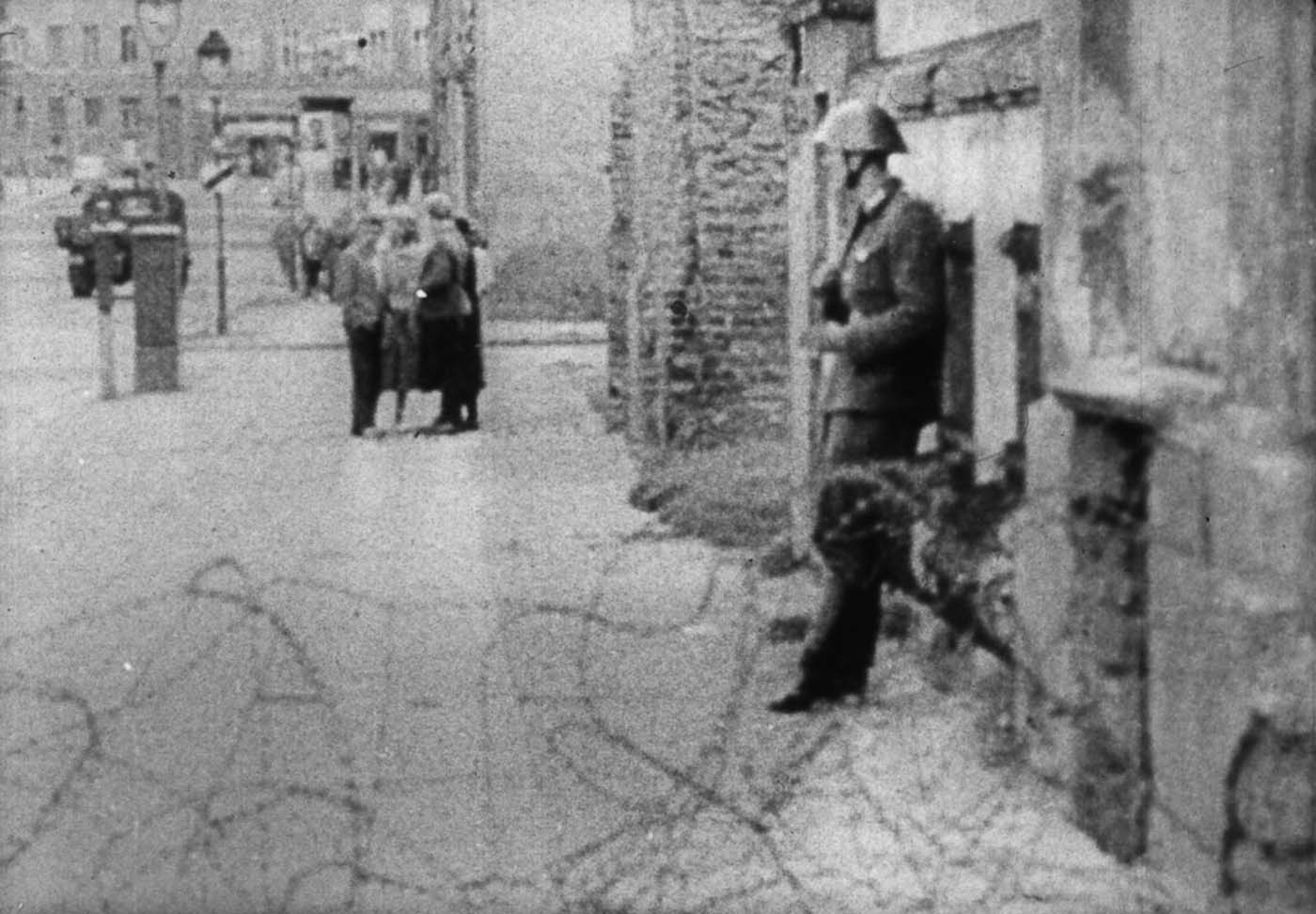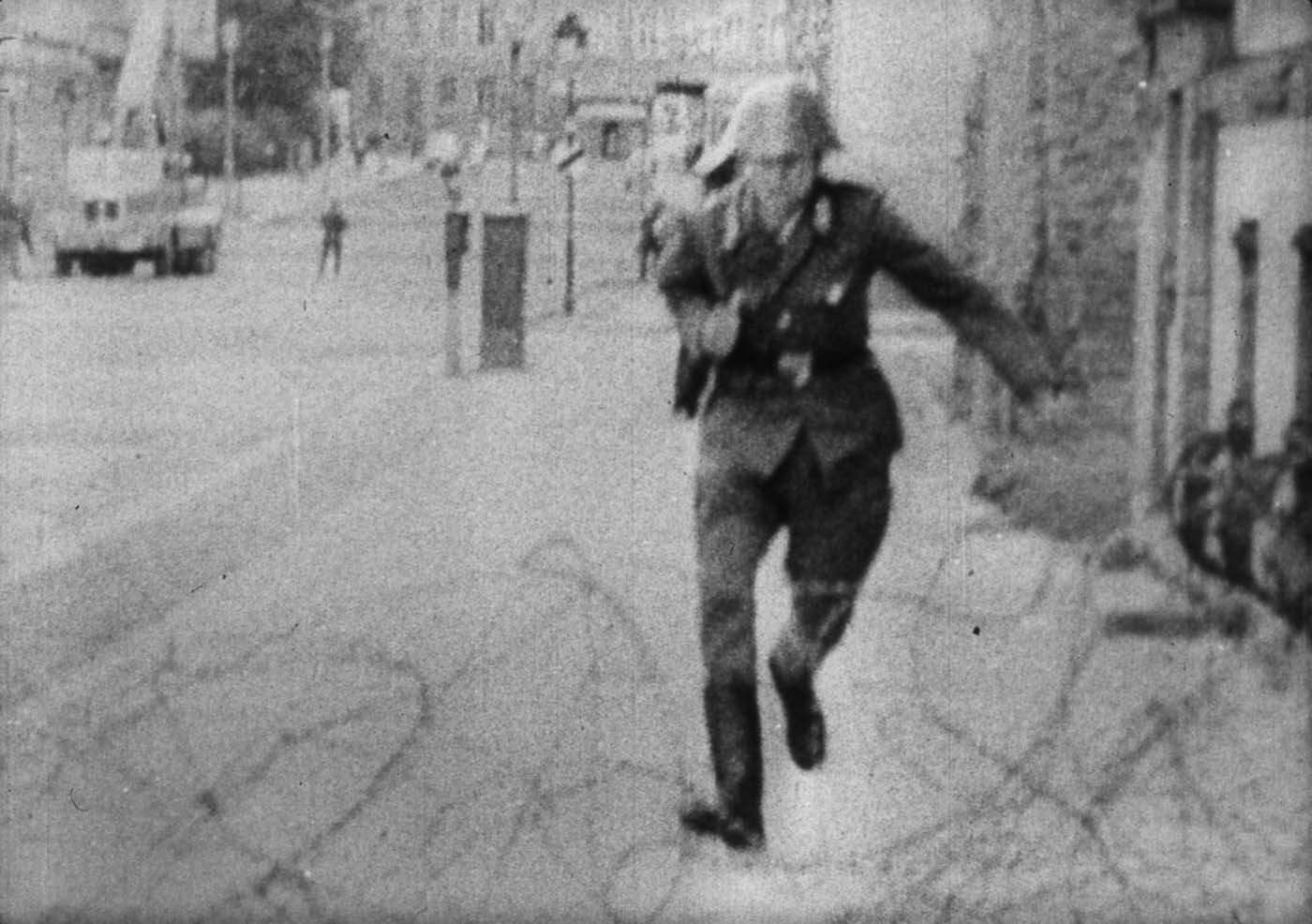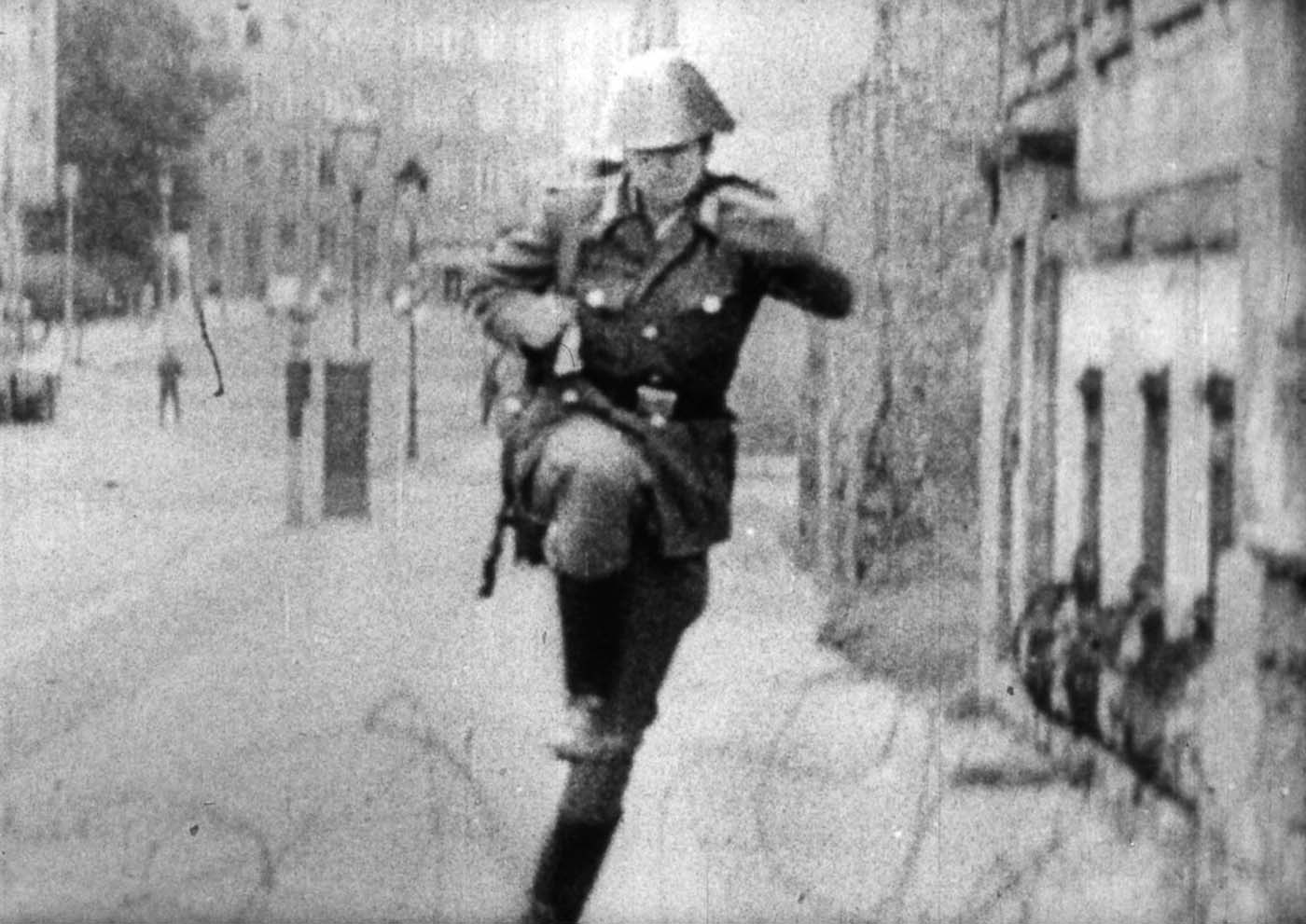
Leap into Freedom
During the years that the Berlin wall existed, Eastern Germans made thousands of attempts to cross it. Such attempts usually had a tragic ending: several hundred people were shot, and thousands were arrested. However, the first escape that took place two days after the construction of the wall commenced was a success — and thanks to the timely photograph of a West Berlin photographer the entire world knew about it by the next morning.
Defector
On August 15, 1961, Hans Konrad Schumann, 19, an non-commissioned officer from the GDR, was on guard on the corner of Ruppiner Strasse and Bernauer Strasse where two days prior they started to construct the Berlin Wall (which at that point was just a barbed wire fence less than one meter high). Schumann waited for the moment when other soldiers briefly left and stepped on the barbed wire pretending that he was checking how reliable it was. West Germans who were crowding on the other side understood his actions correctly and waived: jump on our side!
A police car drove up from the West side and stopped ten meters away from the wall with a door open. Schumann wavered for several more minutes, smoked nervously — and then made up his mind, threw the cigarette away, and ripping off the belt of the submachine gun on the go, jumped over the fence. After landing on the West side, he made it to the car that immediately took him away. The incident itself took six seconds.
The incident itself took six seconds.
Anger and Outrage
Photographer Peter Leibing was the same age as Schumann — he was also nineteen. He spent thirteen of them taking pictures: Peter learned how to use a professional camera that his father brought back from the frontline when he was six, and by legal age he had such a portfolio that Conti-Press agency gladly employed him.
Leibing rushed to Berlin from West Hamburg as soon as he found out that the wall was being built: he couldn’t miss the event of such scale. He later recalled that he first went to the Brandenburg Gate. There, he saw the GDR soldiers standing with submachine guns along the barbed wire that was stretched on the ground. People gathered behind their backs, there was a low hum in the crowd, but nobody risked nearing the barbed wire line. Across from them, on the other side of the wire gathered people from West Berlin. They loudly expressed their anger and outrage.
The situation was generally under control — the faces of the soldiers of the National People’s Army remained calm, and on the West side there was enough police. Leibing further recalled that he took several photographs, but there wasn’t anything particular to do there. He talked to one of the guards, trying to figure out what was going on. And he mentioned that it was going to be more interesting on Bernauer Strasse. So, Leibing went there — to the very corner where Bernauer crosses with Ruppiner.
Luck, Patience, and Horse Racing
On those days, many of Leibinger’s colleagues were waiting on the Western side of the wall — all editors were demanding photographs from the scene. Hours went by, and nothing new happened, so the photojournalists lost vigilance — but not Peter Leibing.
The soldier who was standing very close to the fence and smoking one cigarette after another immediately caught his attention. He was visibly nervous. The photographer installed a camera and focused on the barbed wire — and then stood across from the soldier for one and a half hours and watched him, afraid to blink.
The photograph turned out to be so good that conspiracy theorists still think that it was staged — a fake, manufactured for propaganda purposes. Their first argument is this — how did it happen that a professional photographer ended up at the right place at the right time? — is rather naive. The second one is more compelling: Leibing’s photograph is too perfect. It is hard to take such a photograph from the first try even for an experienced photographer, and with the equipment of that time it was the matter of a split second.
All of this is fairly easy to explain though: in Hamburg, Leibing specialized in shooting horse racing. He spent weeks on end at the race course with a camera, perfecting the skill of shooting horses jumping over the barrier. So, this was the habit that worked when he needed to capture a soldier jumping over the barbed wire fence. The colleague standing next to him also tried to take a historical photograph, but it was just a poor copy: he caught the wrong moment and didn’t focus on the figure.
The colleague standing next to him took a poor copy of Leibing’s photograph.
After he took the photograph, Leibing ran to the police headquarters where they took the defector. There, the photographer found Schumann who was eating pea soup surrounded by policemen who were congratulating him. Leibing took another photograph and was going to go back to Hamburg with his catch, when the colleague (the one who couldn’t take a good shot) convinced Peter to take the photograph to the Berlin headquarters of the media mogul Axel Springer.
They immediately appreciated the political potential of the photograph, and already in the morning it was published on the front page of the main publication of Springer’s media empire — Bild newspaper. On the same day, the entire world talked about the photograph that became the symbol of the desire of Eastern Germans for freedom.
Epilogue
Schumann’s life was tragic. He worried a lot that he couldn’t get in touch with the family that remained in the Eastern Germany; he was also constantly under the impression that Stasi agents were following him and are waiting for the convenient moment to return him back to the GDR. Schumann attributed much of the blame to Leibing’s photograph that made him famous — it prevented him from blending in Western Germany. Even the fall of the Berlin wall didn’t make things easier: in 1998, Schumann, deeply depressed, hung himself in his own garden in Bavaria. His legendary escape is now commemorated by the sculpture of Florian and Michael Brauer called Wall Jumper, installed not far from the place where it happened.
As for Leibing, in 1961 he received the special prize of Overseas Press Club for Leap into Freedom. That was the end of his fame though: he went back to Hamburg and continued to shoot for local newspapers. Leibing met the hero of his photograph several times at events dedicated to the fall of the Berlin wall. The photographer died in 2008.
New and best







